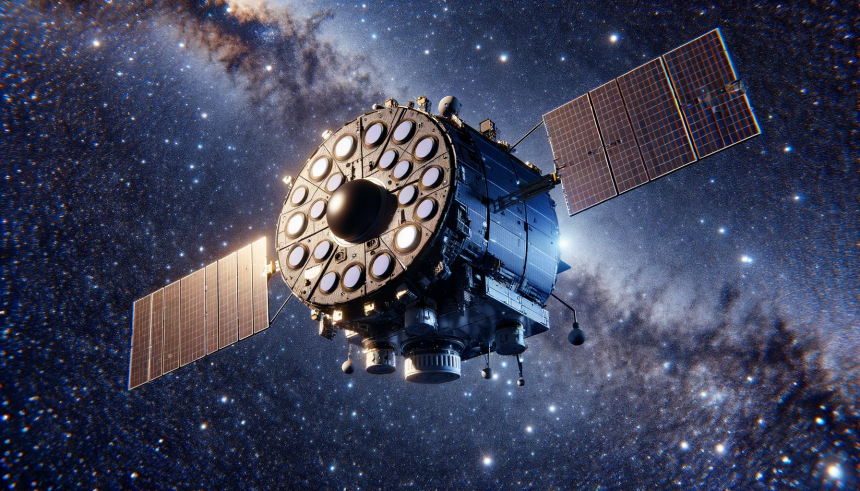NASA’s James Webb Space Telescope has captured a striking image showcasing the formation of a new star within the molecular cloud L1527. The image, taken by Webb’s MIRI (Mid-Infrared Instrument), reveals an hourglass-shaped structure, glowing brightly as a result of the young protostar’s energetic activities. Situated approximately 460 light-years away in the Taurus constellation, this stunning celestial display offers valuable insights into the early stages of star formation. Further details can be found on the NASA Science website.
Mid-Infrared Insights
The newly formed protostar, located at the center of the image, is enveloped by a dense cloud of gas and dust. The vibrant colors in the image highlight various components, with blue indicating carbon-rich molecules and red representing the central protostar and its surrounding dense materials. Notably, the image reveals the protostar’s outflows, which are jets of material emitted as the star gathers mass from its protoplanetary disk, creating shock waves in the surrounding cloud. These outflows carve out the bright hourglass structure, offering a detailed look at the dynamic processes shaping the protostar’s environment.
Contrasting Near-Infrared and Mid-Infrared Views
Webb’s MIRI and NIRCam instruments provide complementary perspectives on the protostar and its surroundings. While NIRCam captures light reflected off dust, MIRI delves deeper into the thick dust and gases affected by the protostar’s outflows. This combination allows researchers to observe how these energetic jets influence the cloud, revealing intricate details such as a glowing white region composed of hydrocarbons, ionized neon, and thick dust. The vivid depiction of these interactions enhances our understanding of the early stages of star formation.
Implications for Star Formation Studies
As the protostar evolves, it will continue to consume and expel material, gradually dispersing the surrounding molecular cloud. This process will ultimately lead to a more stable star, observable by visible-light telescopes. The insights gained from the observations of L1527 have broader implications for understanding similar star-forming regions. By studying the effects of protostellar outflows and their impact on surrounding clouds, scientists can better comprehend the factors that influence star formation and the potential for new stars to emerge in different regions of space.
Earlier observations and analyses of L1527 have consistently shown the presence of a young protostar within a dense cloud of gas and dust. The combination of near-infrared and mid-infrared data from the James Webb Space Telescope enhances our understanding of the complex interactions occurring in these regions. The detailed view provided by MIRI complements previous observations, offering a more comprehensive picture of the dynamic processes at play.
The James Webb Space Telescope continues to provide invaluable data, revealing the intricate behaviors and structures within star-forming regions. By examining the early stages of star formation, researchers can gain insights into the mechanisms driving the birth and evolution of new stars. The ongoing observations of L1527 and similar regions contribute to a deeper understanding of the universe and our place within it.
The combination of near-infrared and mid-infrared observations from Webb offers a unique perspective on the complex interactions within star-forming regions. The detailed imagery and data collected by Webb’s instruments allow scientists to investigate the early stages of star formation, shedding light on the processes that shape young stars and their environments. This comprehensive approach enhances our knowledge of the universe and the intricate mechanisms driving the formation of new celestial bodies.
The James Webb Space Telescope is a collaborative project led by NASA, in partnership with the European Space Agency (ESA) and the Canadian Space Agency (CSA). This international effort aims to explore the mysteries of the cosmos, from our solar system to distant galaxies. Through its advanced instruments and innovative technology, Webb continues to push the boundaries of our understanding, offering unprecedented insights into the formation and evolution of stars, planets, and other celestial objects.










